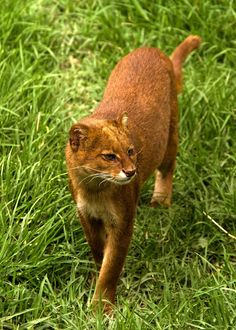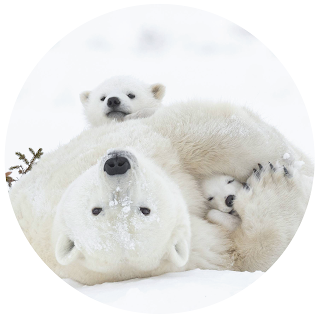St. Andrew Beach Mouse - Kristen Nagamatsu
St. Andrew Beach Mouse
(Peromyscus polionotus peninsularis)
Kristen Nagamatsu
BIO 227
Fall 2017
Description of Recovery Plan
In accomplishing these, the St. Andrew beach mouse can be removed from the Federal List of Endangered and Threatened Wildlife. Some of these actions are already being taken and are showing positive results. For example, the Tyndall Air Force Base is a primary landowner of land on East Crooked Island. They have worked to restore many of the coastal dunes, which has a direct positive impact on the St. Andrew beach mouse. They are also conducting non-native predator control, which helps remove the species that are directly threatening the St. Andrew beach mouse (i.e. feral hogs, red foxes).
What Can You Do?
More about the St. Joseph Peninsula State Park: a primary habitat for the St. Andrew beach mouse HERE
Learn about how the Florida Fish and Wildlife Conservation Commission is working to save beach mice HERE
(Peromyscus polionotus peninsularis)
BIO 227
Fall 2017
 |
| https://i.gr-assets.com/images/S/compressed.photo.goodreads.com/hostedimages/1453309772i/17811195.png |
Description and Ecology of Organism
The St. Andrew beach mouse is a member of the genus Peromyscus, which can be identified by their large ears and eyes, as well as their white underparts. The St. Andrew subspecies of beach mouse has pale, brown colored fur on its head with white fur on its underparts, sides, feet, face, and tail. They can live for up to four to five months. These beach mice exhibit typical nocturnal behavior, and are most active during stormy, rainy, and dark nights. They only live in a single home range during their lifetime, which means that their species does not migrate. An important part of their ecology is the habitat they live in. St. Andrew beach mice require land that has steep dune slopes and large amounts of vegetative cover in order to build and maintain burrows.
 |
| https://media-cdn.tripadvisor.com/media/photo-s/0d/c4/4f/6a/sea-oats-on-dunes-at.jpg |
 |
https://www.mr4x4.com.au/wp-content/uploads/sites/5/dune-structure.jpg
|
The dunes that these beach mouse live in are primarily frontal dunes, as seen in the images above, because frontal dunes are steep and have sufficient vegetation. Their eating habits depend solely on the food available, as they eat whatever the frontal dunes provide to them.
Geographic and Population Changes
Historic collection records demonstrate that the St. Andrew beach mouse occurs primarily along the northern Gulf coast.

http://www.newtonsapple.org.uk/wp-content/uploads/2013/08/different-beach-mice-1024x580.jpg
There were two known populations of the St. Andrew beach mouse prior to the 1980s, located at either the St. Joseph Peninsula State Park or the eastern portion of Crooked Island. The beach mouse population has a supposed 10-year cycle of fluctuation. While the influences of these population fluctuations are unknown, the rainfall patterns and food availability is known to have an impact on the populations. The rainfall patterns influence the water levels, which in turn impacts how much habitat is available to beach mice. The food availability affects survival and reproduction.
Listing Date and Type of Listing
St. Andrew beach mice were federally listed as endangered on December 18, 1998, which means that they are seriously at risk of extinction. Below is a table illustrating all of the different types of recovery priorities. The priority that the St. Andrew beach mouse is very high at 3c due to its high degree of threat and high potential for recovery.
 |
| https://geog51d2016.files.wordpress.com/2016/12/bushmallow1.png?w=322&h=352 |
Cause of Listing + Main Threats
The St. Andrew beach mouse is threatened primarily by severe storms, coastal land development, and natural shoreline erosion. All of these ultimately lead to reduction and fragmentation of their suitable habitat. When the habitats are split up and spread out, the populations are more isolated and the St. Andrew beach mouse numbers decrease significantly. An example of the storms that impact the population is Hurricane Eloise in 1975. The storm fragmented one of the beach mouse’s primary habitats into two segments, which ultimately resulted in the entire population being extirpated. Land development, such as the development of housing in Florida shown below, is constantly a factor as well, because the dunes that the beach mice live in are destroyed. The development adds on to the destruction caused by storms and further divides the population into smaller groups.
 |
| http://edis.ifas.ufl.edu/LyraEDISServlet?command=getImageDetail&image_soid=FIGURE%206&document_soid=UW173&document_version=67894 |
The overall goals of the recovery plan are to:
Maintain existing populations / establish additional populations: Because the St. Andrew beach mouse has a small number of populations, there needs to be more self-sustaining populations distributed in suitable habitats
Remove or minimize known threats: There are many threats to the beach mouse population, both direct and indirect. A primary threat is anything that degrades their sand dune habitat. Other threats are listed above.
Protect and restore the habitat: The more that the sand dune habitat is fragmented, the less space the mice have, and these spaces are being spread further and further apart. Protecting and restoring their habitat is a necessity to reverse the negative impacts that have already affected the beach mice.
| http://userscontent2.emaze.com/images/49930a6a-5b46-424e-b3d6-f39b4c7a3865/4f758be5-0396-40e6-835e-eeccbbda5575.jpg |
Reach out to private landowners: Most of the land the St. Andrew beach mouse depends on is private land. By educating these landowners as well as the general public, people will be more educated about the beach mouse, their needs, and how their dune habitat affects livelihood of everyone.
Educate yourself and others: By gaining a deeper understanding of the many ways species are threatened, you can help increase public awareness and encourage active participation to recover beach mice
Plant: Encouraging the growth of native dune plants can help aid the survival of beach mice. These include sea oats and ground cherry.
Think before you act: Seemingly harmful, recreational activities such as beach driving on a vacation can severely harm the habitats of many species, just like it impacts the sand dunes that St. Andrew beach mice depend on for survival.
Other Resources
Learn more about the federal listing of the St. Andrew beach mouse HERE
See how private landowners such as Tyndall Air Force Base are working to preserve the habitats HERE
Learn about how the Florida Fish and Wildlife Conservation Commission is working to save beach mice HERE
References
St. Andrew Beach Mouse Recovery Plan: U.S. Fish and Wildlife Service Southeast Region
https://ecos.fws.gov/docs/recovery_plan/20110104_SABM_recov_plan_FINAL.pdf
University of Florida: Beach Mice
http://edis.ifas.ufl.edu/uw173
All citations for images written in captions






Your blog was very informational and easy to follow. A chart of the population fluctuations could have been a helpful visual. Your "ways you can help" section was very simple and straight forward which makes it more encouraging to the reader for them to try to take action. Clever way of separating your sections.
ReplyDelete~Sage Massey
Your blog looks very nice and is well organized. You used the images in your blog very well by providing a nice visual for each section. You had a good amount of detail that was formatted well so the reader can easily follow the flow of information.
ReplyDelete-Mckenna Moura
The images, maps and graphs give your blog a lot of credibility and help the reader understand what you are talking about through visual appeal- good job! The What Can You Do section is also very well organized making it easy for the reader to help.
ReplyDelete-Perry Nalle
I liked your use of charts and photos and found it to be really informative to your blog. I thought that you had good detail for each section and it made it easy for the reader to understand your blog.
ReplyDelete-Parker Ornellas
The layout, divisions and imagery in your post are particularly good. I especially appreciate your photo and diagram of the beach mouse's ecology. The image mapping different mice species' populations is a helpful visual as well. Great work!
ReplyDelete-Shannon O'Hehir
I really liked your blog especially the small black mouse from time to time, I thought it was a nice touch. Also, it makes me sad that human development on land forces these mouse to be homeless. I think you added really good images.
ReplyDelete-Christine Okimura
The pictures were really cute of the mice. The information was very clear and well organized so it was easy to follow!
ReplyDelete-Fiona McCallion
Your descriptions were very helpful in describing a small and specific animal and I think your blog really benefitted from it as it was easy to follow and understand.
ReplyDelete-Bryn Mulligan
I was just in Panama City Beach, Florida, over Thanksgiving break, and i found it interesting that all the images of the mouse in its habitat look exactly like the beach i was at, but i wasn't able to see one.
ReplyDelete-Ali Murray